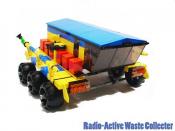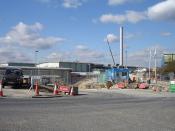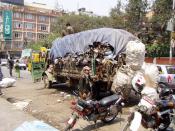INTRODUCTION
The issue of Waste Management is relevant to everyone. Wastes are substances that have no further economic use, and if disposed of in land, water, or air are potentially harmful to humans and/or the environment. Wastes include solid waste (litter, household garbage, industrial & commercial wastes), liquid wastes (sewage, stormwater), and air pollutants (greenhouse gases, carbon monoxide). Much of the waste created by humans cannot be naturally recycled & most of it is not managed in a sustainable manner. Most wastes take a long time to break down - plastic bags take up to 20 years, and cigarette butts take 1-5. Continuing to dump wastes in the manner we are using now is something, which is ecologically unstable and must be dealt with.
ANALYSIS OF THE AVERAGE HOUSEHOLDS 'WHEELIE BIN'
Glass - 7.5%
Plastics - 4.9%
Steel & Aluminium - 2.5%
Food Waste - 26%
Paper Products - 24.6%
Garden Waste - 21%
Misc. (textiles, ceramics, other metals etc) - 13.5%
GEOLOGICAL PROCESSES
The first and most obvious geographical process that relates to household waste management is the creation of that original waste through human activities such as packaging, product usage, the consuming of fuel, and physical human waste. Each individual contributes huge amounts of waste, making Australia the second highest waste-producing nation in the world.
Another process involved with household waste management is the collection and organisation of the waste. In regard to general household waste, local councils usually have a weekly collection system for each household, and recyclables are often collected separately from general waste. These items, such as containers and paper, are recycled, which is much more helpful for the environment. Liquid waste from homes is organised by a sewerage system.
The last main process related to this issue is the disposal of that...


